Musisz być zalogowany/a
-
WróćX
-
Alkatrészek
-
-
Kategória
-
Félvezetők
- Diody
-
Tyrystory
- Tyrystory firmy VISHAY (IR)
- Tyrystory firmy LAMINA
- Tyrystory firmy INFINEON (EUPEC)
- Tyrystory firmy ESTEL
- Tyrystory firmy WESTCODE
- Tyrystory firmy Semikron
- Tyrystory firmy POWEREX
- Tyrystory firmy DYNEX
- Tyrystory do grzejnictwa indukcyjnego
- Tyrystory firmy ABB
- Tyrystory firmy TECHSEM
- Przejdź do podkategorii
-
Moduły elektroizolowane
- Moduły elektroizolowane firmy VISHAY (IR)
- Moduły elektroizolowane firmy INFINEON (EUPEC)
- Moduły elektroizolowane firmy Semikron
- Moduły elektroizolowane firmy POWEREX
- Moduły elektroizolowane firmy IXYS
- Moduły elektroizolowane firmy POSEICO
- Moduły elektroizolowane firmy ABB
- Moduły elektroizolowane firmy TECHSEM
- Przejdź do podkategorii
- Mostki prostownicze
-
Tranzystory
- Tranzystory firmy GeneSiC
- Moduły SiC MOSFET firmy Mitsubishi
- Moduły SiC MOSFET firmy STARPOWER
- Moduły SiC MOSFET firmy ABB
- Moduły IGBT firmy MITSUBISHI
- Moduły tranzystorowe firmy MITSUBISHI
- Moduły MOSFET firmy MITSUBISHI
- Moduły tranzystorowe firmy ABB
- Moduły IGBT firmy POWEREX
- Moduły IGBT - firmy INFINEON (EUPEC)
- Elementy półprzewodnikowe z węglika krzemu
- Przejdź do podkategorii
- Sterowniki
- Bloki mocy
- Przejdź do podkategorii
- LEM áram- és feszültségátalakítók
-
Passzív alkatrészek (kondenzátorok, ellenállások, biztosítékok, szűrők)
- Rezystory
-
Bezpieczniki
- Bezpieczniki miniaturowe do układów elektronicznych seria ABC i AGC
- Bezpieczniki szybkie rurkowe
- Wkładki zwłoczne o charakterystykach GL/GG oraz AM
- Wkładki topikowe ultraszybkie
- Bezpieczniki szybkie standard brytyjski i amerykański
- Bezpieczniki szybkie standard europejski
- Bezpieczniki trakcyjne
- Wkładki bezpiecznikowe wysokonapięciowe
- Przejdź do podkategorii
-
Kondensatory
- Kondensatory do silników
- Kondensatory elektrolityczne
- Kondensatory foliowe Icel
- Kondensatory mocy
- Kondensatory do obwodów DC
- Kondensatory do kompensacji mocy
- Kondensatory wysokonapięciowe
- Kondensatory do grzejnictwa indukcyjnego
- Kondensatory impulsowe
- Kondensatory DC LINK
- Kondensatory do obwodów AC/DC
- Przejdź do podkategorii
- Filtry przeciwzakłóceniowe
- Superkondensatory
-
Zabezpieczenia przeciwprzepięciowe
- Ograniczniki przepięć dla aplikacji RF
- Ograniczniki przepięć dla systemów wizyjnych
- Ograniczniki przepięć linii zasilających
- Ograniczniki przepięć do LED
- Ograniczniki przepięć do Fotowoltaiki
- Ograniczniki przepięć dla systemów wagowych
- Ograniczniki przepięć dla magistrali Fieldbus
- Przejdź do podkategorii
- Filtry emisji ujawniającej TEMPEST
- Przejdź do podkategorii
-
Relék és kontaktorok
- Teoria przekaźniki i styczniki
- Przekaźniki półprzewodnikowe AC 3-fazowe
- Przekaźniki półprzewodnikowe DC
- Regulatory, układy sterujące i akcesoria
- Soft starty i styczniki nawrotne
- Przekaźniki elektromechaniczne
- Styczniki
- Przełączniki obrotowe
-
Przekaźniki półprzewodnikowe AC 1-fazowe
- Przekaźniki półprzewodnikowe AC jednofazowe serii 1 | D2425 | D2450
- Przekaźniki półprzewodnikowe AC jednofazowe serii CWA I CWD
- Przekażniki półprzewodnikowe AC jednofazowe serii CMRA I CMRD
- Przekaźniki półprzewodnikowe AC jednofazowe serii PS
- Przekaźniki półprzewodnikowe AC podwójne i poczwórne serii D24 D, TD24 Q, H12D48 D
- 1-fazowe przekaźniki półprzewodnikowe serii gn
- Przekaźniki półprzewodnikowe ac jednofazowe serii ckr
- Przekaźniki AC jednofazowe na szynę din SERII ERDA I ERAA
- Przekaźniki jednofazowe AC na prąd 150A
- Podwójne przekaźniki półprzewodnikowe zintegrowane z radiatorem na szynę DIN
- Przejdź do podkategorii
- Przekaźniki półprzewodnikowe AC 1-fazowe do druku
- Przekaźniki interfejsowe
- Przejdź do podkategorii
- Magok és egyéb indukciós elemek
- Hűtőbordák, Varisztorok, Hővédelem
- Ventilátor
- Légkondicionálás, Kapcsolótáblák tartozékai, Hűtők
-
Akkumulátorok, töltők, puffer tápegységek és átalakítók
- Akumulatory, ładowarki - opis teoretyczny
- Baterie litowo-jonowe. Niestandardowe baterie. System zarządzania baterią (BMS)
- Akumulatory
- Ładowarki akumulatorów i akcesoria
- Zasilanie awaryjne UPS i zasilacze buforowe
- Przetwornice i osprzęt do fotowoltaiki
- Magazyny energii
- Ogniwa paliwowe
- Ogniwa litowo-jonowe
- Przejdź do podkategorii
-
Automatizálás
- Futaba Drone Parts
- Wyłączniki krańcowe, Mikrowyłączniki
- Czujniki, Przetworniki
- Pirometry
- Liczniki, Przekaźniki czasowe, Mierniki tablicowe
- Przemysłowe urządzenia ochronne
- Sygnalizacja świetlna i dźwiękowa
- Kamera termowizyjna
- Wyświetlacze LED
- Przyciski i przełączniki
-
Rejestratory
- Rejestrator AL3000
- Rejestrator KR2000
- Rejestrator KR5000
- Miernik z funkcją rejestracji wilgotności i temperatury HN-CH
- Materiały eksploatacyjne do rejestratorów
- Rejestrator 71VR1
- Rejestrator KR 3000
- Rejestratory PC serii R1M
- Rejestratory PC serii R2M
- Rejestrator PC, 12 izolowanych wejść – RZMS-U9
- Rejestrator PC, USB, 12 izolowanych wejść – RZUS
- Przejdź do podkategorii
- Przejdź do podkategorii
-
Kábelek, Litz vezetékek, vezetékek, rugalmas csatlakozások
- Druty
- Lica
-
Kable do zastosowań specjalnych
- Przewody przedłużające i kompensujące
- Przewody do termopar
- Przewody podłączeniowe do czyjnków PT
- Przewody wielożyłowe temp. -60°C do +1400°C
- SILICOUL przewody średniego napięcia
- Przewody zapłonowe
- Przewody grzejne
- Przewody jednożyłowe temp. -60°C do +450°C
- Przewody kolejowe
- Przewody grzejne w Ex
- Przewody dla przemysłu obronnego
- Przejdź do podkategorii
- Koszulki
-
Plecionki
- Plecionki płaskie
- Plecionki okrągłe
- Bardzo giętkie plecionki - płaskie
- Bardzo giętkie plecionki - okrągłe
- Miedziane plecionki cylindryczne
- Miedziane plecionki cylindryczne i osłony
- Paski uziemiające giętkie
- Plecionki cylindryczne z ocynkowanej i nierdzewnej stali
- Miedziane plecionki izolowane PCV - temperatura do 85 stopni C
- Płaskie plecionki aluminiowe
- Zestaw połączeniowy - plecionki i rurki
- Przejdź do podkategorii
- Osprzęt dla trakcji
- Końcówki kablowe
- Szyny elastyczne izolowane
- Wielowarstwowe szyny elastyczne
- Systemy prowadzenia kabli
- Peszle, rury
- Przejdź do podkategorii
- Az összes kategória megtekintése
-
Félvezetők
-
-
- Szállítók
-
Alkalmazások
- Bányászat, kohászat és öntöde
- Berendezések elosztó-, vezérlő- és távközlési szekrényekhez
- Berendezések és alkatrészek veszélyes területekhez [Ex]
- CNC szerszámgépek
- DC és AC hajtások (inverterek)
- Energetika
- Energy bank
- Gépek fa szárítására és feldolgozására
- Hegesztőgépek
- Hőmérséklet mérés és szabályozás
- HVAC automatizálás
- Indukciós Hevítés
- Ipari automatizálás
- Ipari védőeszközök
- Motorok és transzformátorok
- Műanyag hőformázó gépek
- Nyomtatás
- Tápegységek (UPS) és egyenirányító rendszerek
- Villamos és Vasúti Vontatás
- Vizsgálati és laboratóriumi mérések
-
Telepítés
-
-
Induktorok
-
-
Indukciós eszközök
-
-
https://www.dacpol.eu/pl/naprawy-i-modernizacje
-
-
Szolgáltatás
-
- Kapcsolat
- Zobacz wszystkie kategorie
Capacitive touch screens: How they work and their application in industry

Capacitive touchs creens play a crucial role in the modern world of technology, and their application in industry is becoming increasingly common. Thanks to their reliability and precision, capacitive touch panels are used in many industrial sectors, from automation to medical devices. But how exactly does a capacitive touch screen work, and why is it so popular in industry? Let’s take a look at its operating principles and key advantages.
How Capacitive Touch Screens Work
A capacitive touch screen operates by detecting changes in an electric field. Unlike resistive screens, which respond to pressure, a capacitive touch screen utilizes the electrical conductivity properties of human skin. When the user touches the screen, there is a change in the distribution of electrical charge on the surface of the panel. Special sensors located on the edges of the screen analyze these changes, accurately pinpointing the touch location.
A key feature of capacitive screens is their ability to respond to very light touches, which enhances user comfort. Capacitive touch panels are also highly durable, as they lack mechanical moving parts that could wear out over time.
Application of Capacitive Touch Screens in Industry
Capacitive touch panels are widely used in industrial settings primarily because of their durability and precise operation. They are resistant to mechanical damage, such as scratches, making them an ideal solution for industries where exposure to dust, dirt, or moisture is common.
In automation, capacitive screens are used to control machinery and equipment. Thanks to their intuitive interface, users can manage production processes quickly and efficiently. Additionally, capacitive touchscreens are well-suited for control panels, where fast response and accuracy are required. These screens are often found in Human-Machine Interface (HMI) devices, which enable direct interaction between humans and machines.
Advantages of Capacitive Technology Over Resistive Technology
Capacitive screens have several important advantages over their resistive counterparts. First, they are more sensitive to touch, allowing for more precise operation. Second, capacitive touch panels are more resistant to wear, as they do not require pressure to function, significantly extending their lifespan. Moreover, due to their design, capacitive touch screens offer better visibility, as they do not need to be covered with protective layers, which is often the case with resistive screens.
Conclusion
Capacitive touchscreens are modern and highly functional solutions that are successfully applied in many industrial sectors. Their operating principle is based on detecting changes in an electric field, ensuring high precision and durability. Capacitive touch panels are indispensable in industrial environments due to their resistance to mechanical damage and intuitive operation. As technology advances, it is expected that their use will become even more widespread, increasing the efficiency of production processes and enhancing user comfort.
Related products
Related posts
 Nowości w dziale zasilacze, przetwornice i inwertery – inwertery Premium
Nowości w dziale zasilacze, przetwornice i inwertery – inwertery Premium
 Oświetlenie do obrabiarek– oprawy KIRA!
Oświetlenie do obrabiarek– oprawy KIRA!














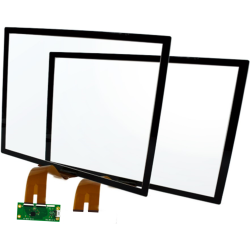

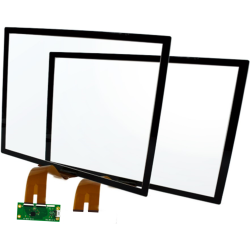






















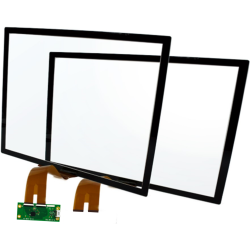
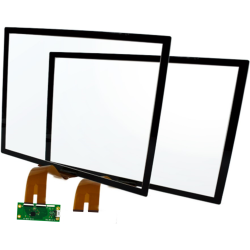


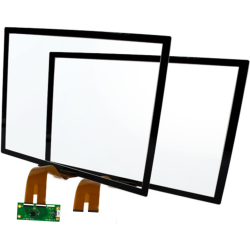




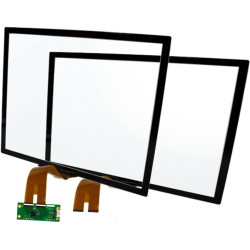








Leave a comment